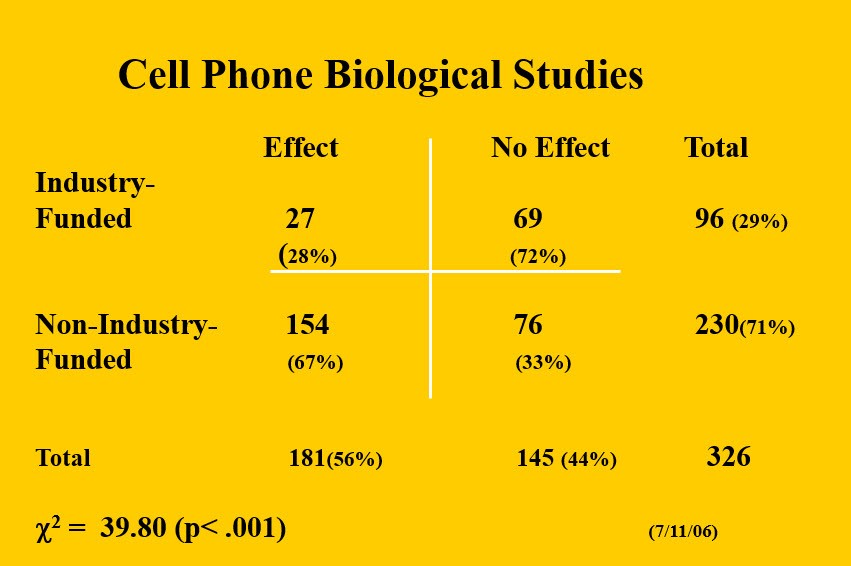(THIS ARTICLE IS MACHINE TRANSLATED by Google from Norwegian)
When powerful forces are behind, it is necessary to ask questions. Telenor's CEO, Sigve Brekke, gives us parts of the answer to who 5G is for: "Early launching and experimentation with 5G is important for Norwegian industrial development and competitiveness."
At the same time, more and more independent researchers are warning about the health hazards of radiation from wireless communications technology. "EMF-scientist appeal" has now been signed by 247 researchers with specialized expertise in the field. Will safety and health be set aside if the motivation is big enough? Historically, there is no new phenomenon.
A World Health Organization (WHO) report in 2000 revealed how the tobacco industry used heavy lobbying in its time to influence WHO's attitude to smoking and sowed doubts about the health hazards of the general population. The manipulation was sophisticated and largely in secret. Scientific experts with invisible ties to the industry were an important part of the strategy. How could they succeed? The tobacco industry had networks and money, and it paid off. Who has networks and money today, if not the tech industry? In addition, they have global visions: a robotic society of AI (Artificial Intelligence), IoT (Internet of Things) and SMART products that will revolutionize our lives. It all depends on a tightly woven global wireless network.
Information Power
When the tobacco industry used large resources to undermine the health hazards of smoking, is it possible that the technology industry uses the same method? Do they need to cast doubt… on the health hazards of radiation from wireless communication technology? In a speech to the National Press Club in 2016, Tom Wheeler, former lobbyist in the cable and wireless industry, chairman of the FCC (the Federal Communications Commission) and now a member of the IoT company Actility, explains that technology should set the framework for policy and not the other way around. If 5G is to reach its full potential with new innovations and subsequent billions of US dollars in financial gain, they must have free rein. They can not wait for government regulations.
Recommended limits for radiation from wireless communication technology in Europe were set by the International Commission for Non-Ionizing Radiation Protection (ICNIRP) in 1998. Norwegian authorities follow these. In the article "How much is safe", journalists in Investigate Europe reveal how ICNIRP consists of a self-elected commission where members are closely interwoven in a network of other organizations and expert committees that support boundary values. They are also linked to industry funding.
67 percent of the independent research referred to negative biological
effects of mobile use as opposed to 28 percent of industry-funded studies.
ICNIRP has a Norwegian representative, Gunhild Oftedahl, who works at the Faculty of Information Technology and Electrical Engineering at NTNU in Trondheim. She is also a member of an expert committee appointed by the Norwegian Institute of Public Health, which in 2012 published a report representing the official position of the Norwegian health authorities. According to the report, the overall research basis provides no evidence to conclude that radiation from wireless communications technology causes health damage. The question is what research do they base this conclusion on and who funded it?
Industry-paid research
Researcher Henry Lai investigated in the 90s the effect of non-ionizing microwave frequencies on DNA in rats for the Office of Naval Research in the United States. They wanted to know if radar radiation affected the health of the operators, without the thought of mobile phone. However, the mobile giant Motorola Inc became interested in the study. They spent huge resources on undermining Lai's work, trying to get him fired from the job and funding studies that contradicted his results. This motivated Lai to collect available mobile phone studies between 1996 and 2006. He divided the studies into independent versus industry-funded research and concluded that 67 percent of the independent research indicated negative biological effects of mobile use, as opposed to 28 percent of the industry-funded studies ( see picture).

ORSAA (Oceania Radiofrequency Scientific Advisory Association), an independent research team looking at studies on the health effects of radiation from wireless communications, published in 2017 the article "Who is Running the WHO EHC review – ICNIRP?". It indicates that networks and funding sources influence both research results and the selection of representatives to the WHO expert panel in the radiation case.
Is 5G Safe?
Is the tech industry so busy now that studies of the biological effects of radiation that cover the entire globe are irrelevant? One gets a strong impression of this in a hearing in which Richard Blumenthal, US senator from Connecticut, asks a panel of industry professionals how much money has been spent on independent research in the field. The answer is null. Millimeter waves to be used in 5G have not been tested on a large scale before, only for military use. Still, SpaceX, Boeing, One Web and Spire Global are launching 20 000G satellites orbiting the Earth. For whom?
If 5G is not for you, I recommend signing the call here:
https://www.5gspaceappeal.org/
1 www.digi.no/artikler/trondheim-blir-forste-storby-med-5g/461526
2 www.mfscientist.org/
3 www.youtube.com/watch?v=tNH35Kcao60
4 https://www.youtube.com/watch?v=hsil3VQE5K4
See also the report from the National Institute of Public Health: Weak high-frequency electromagnetic fields – an assessment of health risk and management practices, www.fhi.no/publ/2012/svake-hoyfrekente-elektromagnetisk/
More to read:
“How much is safe” Investigate Europe: https://www.investigate-europe.eu/publications/how-much-is-safe/
Millimeter waves to be used in 5G: https://www.mwrf.com/systems/what-role-will-millimeter-waves-play-5g-wireless-systems
20.000 5G satellites: https://childrenshealthdefense.org/news/5g-the-big-picture/?fbclid=IwAR39qSkZgOPyqX7zJi_xlDaXjvkes3MjJoQ9CqYkihM4HjIhL4SjdiCcCh0
"Who is running the WHO EHC review – ICNIRP?" ORSAA: https://www.orsaa.org/latest-news/is-icnirp-a-closed-club
Also read the comment: 5G can promote the UN's sustainability goals


